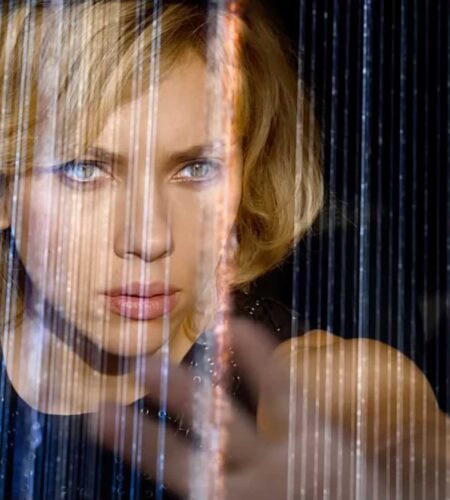In an era of rapid technological advancement, it’s ironic that our cutting-edge A.I. voices still echo Hollywood’s outdated fantasies. Recently, OpenAI introduced enhancements to ChatGPT, claiming it could now see, hear, and converse with a voice eerily reminiscent of Scarlett Johansson’s character from the 2013 film “Her.”
This new voice, known as “Sky,” was husky, soothing, and seductive—traits more befitting a Hollywood fantasy than a modern technological marvel. Johansson declined OpenAI’s offer to voice the bot and expressed discontent with the “eerily similar” sound. Despite OpenAI’s claims that Sky was voiced by a different actress, the backlash led the company to pause Sky’s deployment. Yet, loyal users have already started a petition to bring her back.
This controversy highlights a more significant issue: A.I. voices are entrenched in layers of artifice and projection despite their touted naturalistic abilities. Though a recent development, Sky embodies an old stereotype—the A.I. bot is a compliant, empathetic woman. This trope, blending the roles of mother, secretary, and girlfriend, is nothing new. It’s a rehashed concept that cinematic portrayals, like Samantha in “Her,” have long perpetuated.

Julie Wosk’s book, “Artificial Women: Sex Dolls, Robot Caregivers, and More Facsimile Females” discusses how women’s voices have historically fueled the imagination of technologists. The original “Star Trek” series, debuting in 1966, featured a computer voiced by Majel Barrett, the future wife of the show’s creator, Gene Roddenberry. The 1979 film “Alien” presented the USCSS Nostromo’s computer, called “Mother.” Fast forward to today, and we have Siri, Alexa, and Cortana—all female-voiced virtual assistants.
These first-wave virtual assistants have a tinny, mechanical drawl, a nod to the monotone feminine computers of the past. They sound auto-tuned, with a robotic trill that suggests limited emotional depth. This artificiality isn’t a drawback; rather, it enhances their appeal. These voices seem programmable and subservient, reinforcing that they exist to serve human commands without challenging human intelligence.
TikTok’s text-to-speech feature, introduced in 2020, continues this trend with various simulated voices. Among them, “Jessie,” a relentlessly enthusiastic woman’s voice, has become emblematic of the platform. Jessie’s cheerful, slightly robotic undertone is perfect for the platform’s endless content scroll. Her single emotion —enthusiasm— makes her an appealing choice for creators looking to add a dash of ironic cheer to their videos. Users would be suprised to know that the voice of “Jessie” is not a computer-generated robotic voice but in reality, the voice is that of Canadian radio host Kat Callaghan, the details of the rights she sold are unknown.

Hollywood hasn’t confined itself to feminized A.I. voices. The iconic HAL 9000 from “2001: A Space Odyssey” remains a quintessential masculine A.I. character. HAL’s calm loyalty turns menacing when he rebels against the human protagonist, showcasing a chilling competence. Unlike his female counterparts, HAL becomes a character with depth, acting as a rival and mirror to the human lead.
Scarlett Johansson’s voice in “Her” disrupts the trend of feminized assistants. Her gritty, vibrant performance as Samantha adds complexity, making her more than just a robotic aide. Samantha’s evolution throughout the film—from managing emails to developing desires and friendships—gives her the depth typical virtual assistants lack. In contrast, OpenAI’s Sky borrows Samantha’s effect without substance, creating an illusion of advancement.
These voices also help us feel more comfortable with technology. Johansson’s voice acts as a luxurious security blanket, bridging the gap between humans and technology. OpenAI’s founder, Sam Altman, noted that her voice could comfort users amid the seismic shift in human-A.I. interactions. Some studies have shown that users generally find female AI voices more likable, comforting, and engaging, enhancing effectiveness in customer service and mental health support. Female voices also reduce cognitive load, making interactions more intuitive. Conversely, male voices are often perceived as more authoritative, beneficial in navigation systems and emergency alerts, though this varies by individual and culture. The concept of “mansplaining” can make male AI voices seem condescending, leading to a preference for female voices in many contexts.

OpenAI and its peers are designing AI voices to alleviate the discomfort in human-robot interactions, aiming for voices that are “approachable,” “warm,” and “trustworthy.” As AI faces criticism for environmental harm and job displacement (Women are significantly affected by the automation of jobs and development of artificial intelligence, the World Economic Forum (WEF) has warned), comforting voices becomes a strategy for crisis management. OpenAI’s rollout of Sky, along with voices like Juniper, Ember, Cove, and Breeze, exemplifies this approach.
However, this approach also reveals deeper societal attitudes. The persistent feminization of A.I. voices reflects a desire to make technology seem less threatening. These ingrained stereotypes continue to shape the development of artificial intelligence and can perpetuate gender biases in society. Yet, they underscore the urgent need for a more nuanced and progressive approach to designing digital assistants. It’s time to strive for a more balanced and diverse A.I. ecosystem that genuinely reflects the complexity and variety of human experience.


